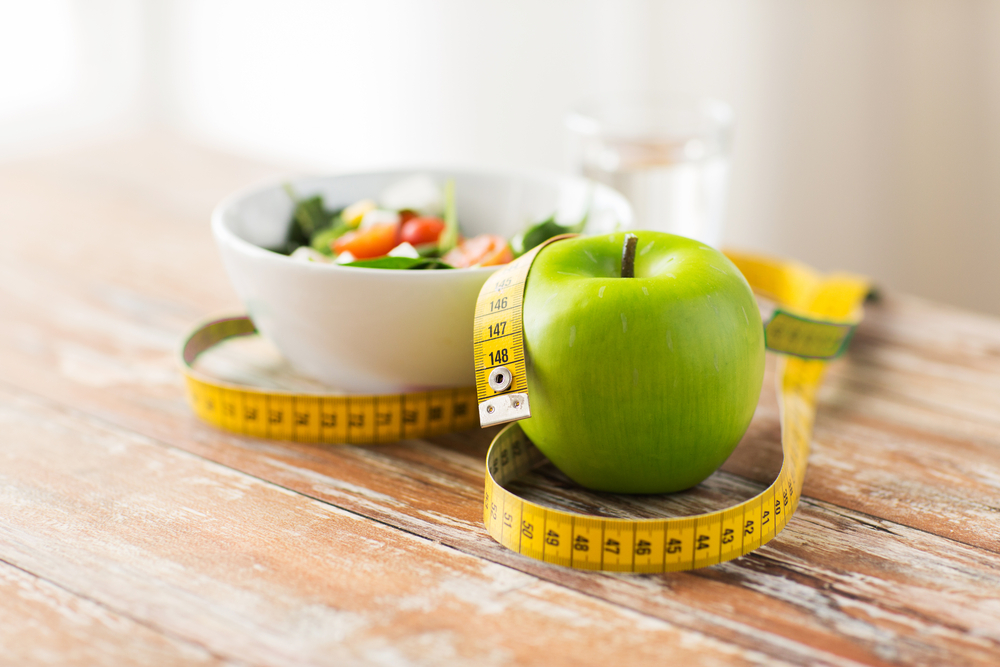There are many myths surrounding weight loss and it's not always easy to navigate. In this article we will provide you with clear information about weight loss and tips on how to lose weight in a healthy, practical and sustainable way through a balanced diet.
How does weight loss work?
Every day we need a certain amount of calories to give us the energy to get through the day. Weight loss is mainly about expending more calories than we consume.
Your body is constantly expending calories to meet your physiological needs. Expenditure increases if you are physically active, but low intensity cardio sessions and high intensity sports sessions will not provide the same calorie expenditure.
The impact of sports sessions on your body also depends on factors such as your gender, weight and metabolism. To give you an idea, seven 30-minute sports sessions each week represents an average daily expenditure of about 210 kcal for a 60 kg woman and 300 kcal for an 80 kg man.
Certain hormones (such as insulin, cortisol, oestrogen, progesterone and testosterone), due to stress among other things, which leads to the release of cortisol in the body, can promote the storage of fat, especially in women.
It is possible that these hormones influence the fact that your weight gain is mainly in the thighs or in the stomach. If you wish, you can do targeted sports sessions that specifically aim to tone up the muscles in the thighs or the stomach.
Weight loss in practice
The first thing to do if you are serious about losing weight is to calculate your daily calorie intake. The easiest way to do this is to find a mobile application dedicated to this purpose.
All you have to do is enter every food you eat and your daily calorie intake will be calculated automatically. You can then use it to analyse your eating habits.
These applications are not a substitute for a nutritionist who can help you determine your caloric intake accurately and assess how your diet may affect your weight gain.
Calculate your basal metabolic rate
If you don't have a smartphone handy, you can start by calculating your
basal metabolic rate using the following formula:
Your weight (in kg) x
10 + your height (in cm) x 6. 25 - your age (in years) x 5 = MB (in
Kcal).
Add 5 if you are male or subtract 161 if you are female. This basal metabolic rate should then be multiplied by 1. 37 if you are sedentary, by 1. 55 if you are active or by 1. 8 for athletes. For example, for a physically active woman of 70 kg, 1. 65 metres and 30 years old: (70 x 10) + (165 x 6. 25) - (30 x 5) - 161 = 1420 Kcal. We multiply her basic metabolism by 1. 55 because she is physically active: 1420 x 1. 55 = 2201 Kcal. This person will therefore need to consume less than 2200 Kcal per day if they wish to lose weight.
The basic tips
A practical and effective way to start losing weight is to follow the following tips and see how they affect your calorie intake and expenditure (which you have just calculated):
- Avoid strict diets. While diets such as detox diets and high-protein diets can make you lose weight quickly, the weight will come back on immediately when you stop the diet. This 'yo-yo' effect of juggling weight loss and weight regain is bad for your health and simply changing some of your eating habits is more effective in the long term.
- Eat to your heart's content. . . to avoid snacking. Eating a full breakfast and lunch will give you the energy you need for the day and reduce the risk of eating unhealthy foods outside of meals. The evening meal can be lighter, as you will not need a high calorie intake at that time.
- Eat protein and fibre with every meal. Protein and fibre have the ability to make you feel full, so you won't feel hungry for longer. Fruits and vegetables, whole grains (especially oatmeal), pulses (such as lentils, kidney beans or chickpeas), low-fat fish and white meats are all good sources of fibre and/or protein.
- Reduce your alcohol and sugar intake. Many foods can contribute to weight gain, but the ones to avoid most are alcoholic beverages and refined sugar, which is found in many industrial foods.
- Increase your physical activity. If changing your eating habits is not an option for you, you can still lose weight by adding a daily exercise session.
- Sleep well. Getting enough sleep at regular times not only has a huge impact on your health, it can also lead to weight gain. This is because if your body feels weak after not sleeping well, it will release ghrelin, an appetite stimulating hormone, to compensate for the lack of energy.
Example of a balanced eating plan for a person who wants to lose weight
Breakfast
- A bowl of oatmeal with nuts, bananas (to replace sugar) and almond milk or skimmed cow's milk (Replace cow's milk, which is high in saturated fat and lactose, with unsweetened almond milk or 0% fat dairy products)
- One cup of green tea
Breakfast
- A fillet of cod
- One portion of wholemeal bulgur or quinoa
- As much vegetable as you like (Fruit and vegetables are good for you but only vegetables should be eaten in large quantities as they are low in carbohydrates)
Snack
- One portion of fruit
- A cup of green tea
Evening meal
- Chicken breast salad with black beans and lots of vegetables
- Dressing with olive oil, coriander and lemon juice
- A slice of wholemeal bread
During the day
- A sports session: 30 minutes of running or swimming.



